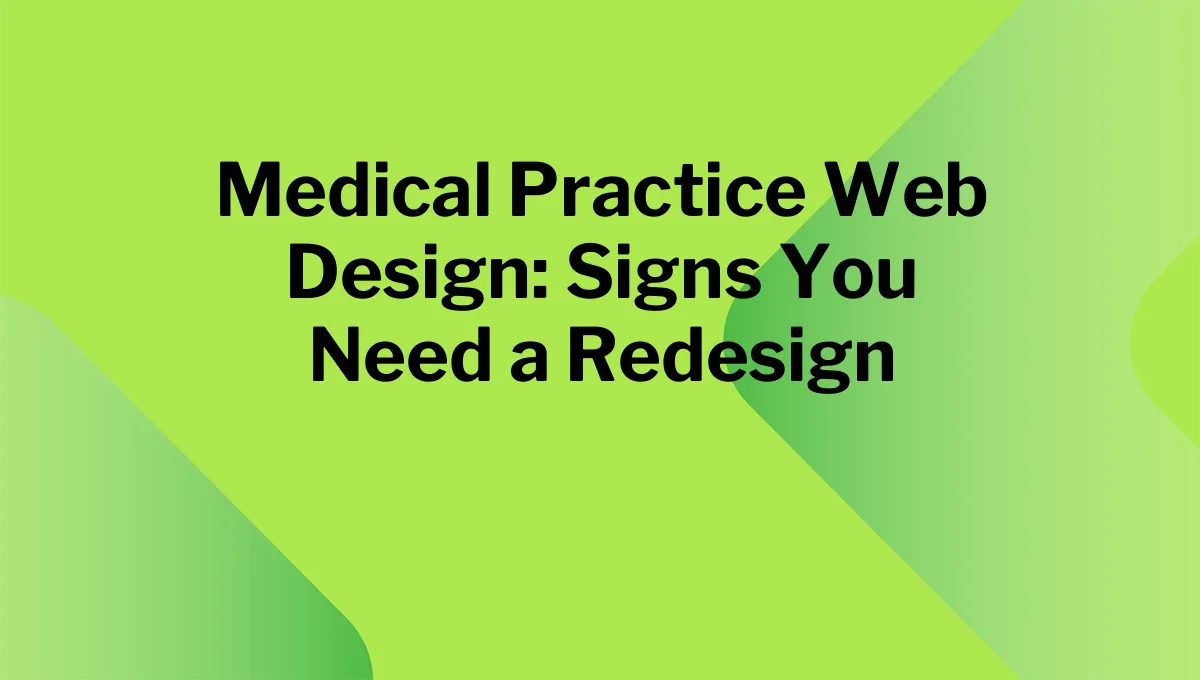Introduction: transforming Patient Engagement Through Web Design
In the digital age, a well-designed website serves as the virtual front door to your medical practice. It’s where potential patients first encounter your brand and form their initial impressions. However, the web landscape is ever-evolving, and what onc was state-of-the-art may now feel dated or ineffective. As technology advances and patient expectations shift,it’s crucial to periodically assess your online presence to ensure it reflects the quality of care you provide.
at Cham Agency, we beleive that your website should not onyl be a source of information but also an engaging experience that fosters trust and encourages interaction. In this article, we’ll explore key signs that indicate your medical practice website might potentially be overdue for a redesign. By identifying these red flags, you can take proactive steps to enhance your online presence and ultimately improve patient engagement and satisfaction. Join us as we delve into the world of medical practice web design and discover how a fresh,user-amiable interface can transform the way you connect with patients.
recognizing Outdated Aesthetics and Functionality in Your Medical Website
In the fast-evolving digital landscape, it’s crucial for medical professionals to ensure their website reflects current standards in aesthetics and functionality. An outdated design can deter potential patients, as it conveys a lack of professionalism and attention to detail. Look for signs such as dated color schemes, unresponsive layouts, and cluttered navigation that can degrade the user experience. If your site resembles those from a bygone era or is difficult to navigate, it might be time for a fresh look that meets modern user expectations.
Furthermore, functionality plays a key role in how effective your website is in engaging users. A site that loads slowly, has broken links, or lacks essential features like online appointment booking can frustrate visitors and drive them away. To evaluate your site’s functionality, consider these factors:
- Mobile Optimization: Is your website responsive across devices?
- Easy Navigation: Can users find information quickly?
- SEO Best Practices: Does your website rank well in search engines?
Maintaining a user-friendly and visually appealing website is not just an aesthetic choice; it is indeed a necessary step to improve patient engagement and satisfaction.
Understanding User Experience and Its Impact on Patient Engagement
In today’s healthcare landscape, the design of your medical practice’s online platform plays a crucial role in determining how effectively you engage with patients. A thoughtfully crafted user experience (UX) can transform a simple visit to your website into a valuable interaction. Intuitive navigation,fast load times,and mobile responsiveness are just a few components that make your site welcoming and accessible. By focusing on these elements, you can not only reduce frustration among potential patients but also foster a sense of trust and professionalism. The easier it is for users to find essential information, such as appointment scheduling or health resources, the more likely thay are to engage meaningfully with your services.
Moreover, understanding how users interact with your website through data analytics can reveal significant insights into patient preferences and behaviors. This information can guide future design choices to enhance engagement further. As a notable example, implementing features like online chat support or interactive health questionnaires can improve the overall experience, allowing patients to feel more connected to your practice. Consider the following advantages of an optimized user experience:
- Increased patient satisfaction: Smooth navigation leads to a positive first impression.
- Higher conversion rates: More visitors are likely to become patients when your site is user-friendly.
- Enhanced retention: Satisfied patients are more likely to return for follow-up care or recommend your practice.
The Importance of Mobile Optimization for Modern Medical Practices
in today’s fast-paced world, mobile optimization is no longer a luxury but a necessity for medical practices aiming to connect with their patients effectively. With more than half of all internet traffic coming from mobile devices, it is crucial that your website provides a seamless experience regardless of how patients access it. A well-optimized mobile site not only enhances user experience but also impacts patient engagement and satisfaction. key elements of mobile optimization include fast loading times, easy navigation, and mobile-friendly content layout, which all contribute to keeping patients informed and engaged.
moreover, search engines prioritize mobile-optimized websites in their rankings, making it essential for practices to adapt to the changing landscape of digital marketing. Without proper mobile optimization, your website may be at a disadvantage, leading to a decrease in visibility and accessibility.Consider the following advantages of mobile optimization for your practice:
- Improved patient engagement and retention
- Higher search engine rankings
- Increased credibility and professionalism
- Better access to patient resources and information
| Mobile Optimization Benefits | description |
|---|---|
| Enhanced User Experience | Ensures patients can easily navigate on any device. |
| Increased traffic | Mobile-friendly sites attract more visitors. |
| Accessibility | Patients can access information anytime, anywhere. |
Optimizing your website for mobile devices can lead to an unparalleled increase in patient trust and loyalty, reinforcing the overall efficacy of your medical practice. Investing in mobile optimization is a step towards embracing innovation and catering to the needs of modern patients, ultimately reflecting the values of your practice and the care you provide.
Integrating SEO Strategies into Your Web Redesign for Better Visibility
When embarking on a web redesign for your medical practice, weaving SEO strategies into the fabric of your new site is paramount. begin by conducting a complete audit of your existing content to identify which pages are traffic drivers. This entails examining keyword rankings, search volume, and user engagement metrics. As you build your new website,make sure to implement on-page SEO techniques,such as optimizing title tags and meta descriptions with relevant keywords,utilizing header tags effectively,and ensuring that images are properly tagged with alt text. Additionally, consider creating a blog section where you can delve into medical topics that interest your patients, bolstering both your authority and your site’s searchability.
Equally vital is the technical aspect of your redesign.Ensure that your new website is mobile-responsive and has a fast loading speed. Search engines prioritize sites that provide a seamless user experience. You’ll also want to build a solid internal linking structure to guide visitors through your site and help search engines crawl your pages more effectively. To track your progress, set up analytics tools that can measure performance metrics post-launch. By prioritizing SEO within your redesign, you’re not just enhancing your aesthetic appeal; you’re setting the stage for improved visibility and engagement with your patients.
Wrapping Up
As we step into an increasingly digital age, the importance of a well-designed medical practice website cannot be overstated.A website is often the first point of contact for potential patients, and ensuring that it communicates professionalism, trust, and accessibility is paramount. If you’ve identified any of the signs we’ve discussed—from outdated aesthetics and slow loading times to a lack of mobile compatibility or user engagement—it may be time to consider a redesign.
Navigating the complexities of medical web design can feel daunting, but it is indeed also an opportunity for renewal and growth. A fresh website not only enhances the user experience but can also elevate your practice’s online presence, making it easier for patients to find you and trust in your services.
In closing, remember that your website is more than just a digital brochure; it is a reflection of your practice’s dedication to patient care. As trends evolve and technology advances, staying ahead of the curve can set your practice apart. A thoughtful redesign can breathe new life into your online presence, ultimately leading to a stronger connection with your patients and a thriving practice. Take the plunge, embrace the change, and watch as your practice flourishes in the digital landscape.





